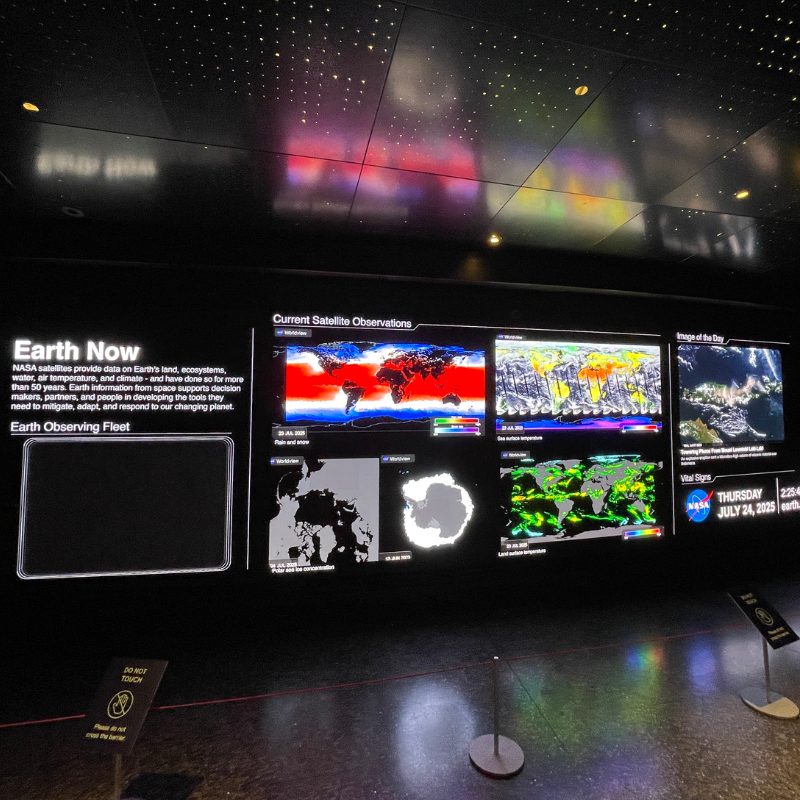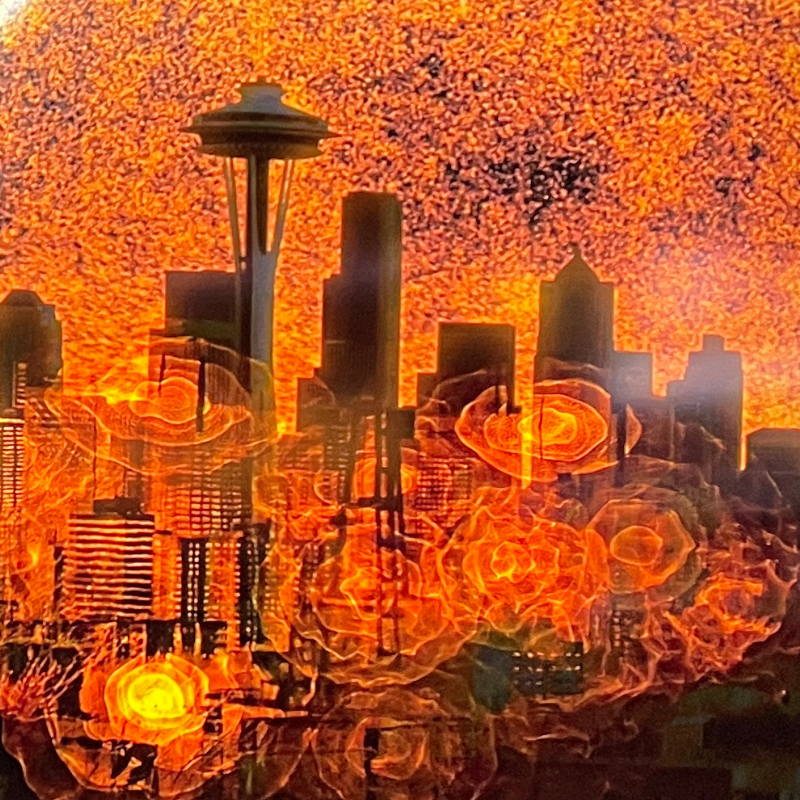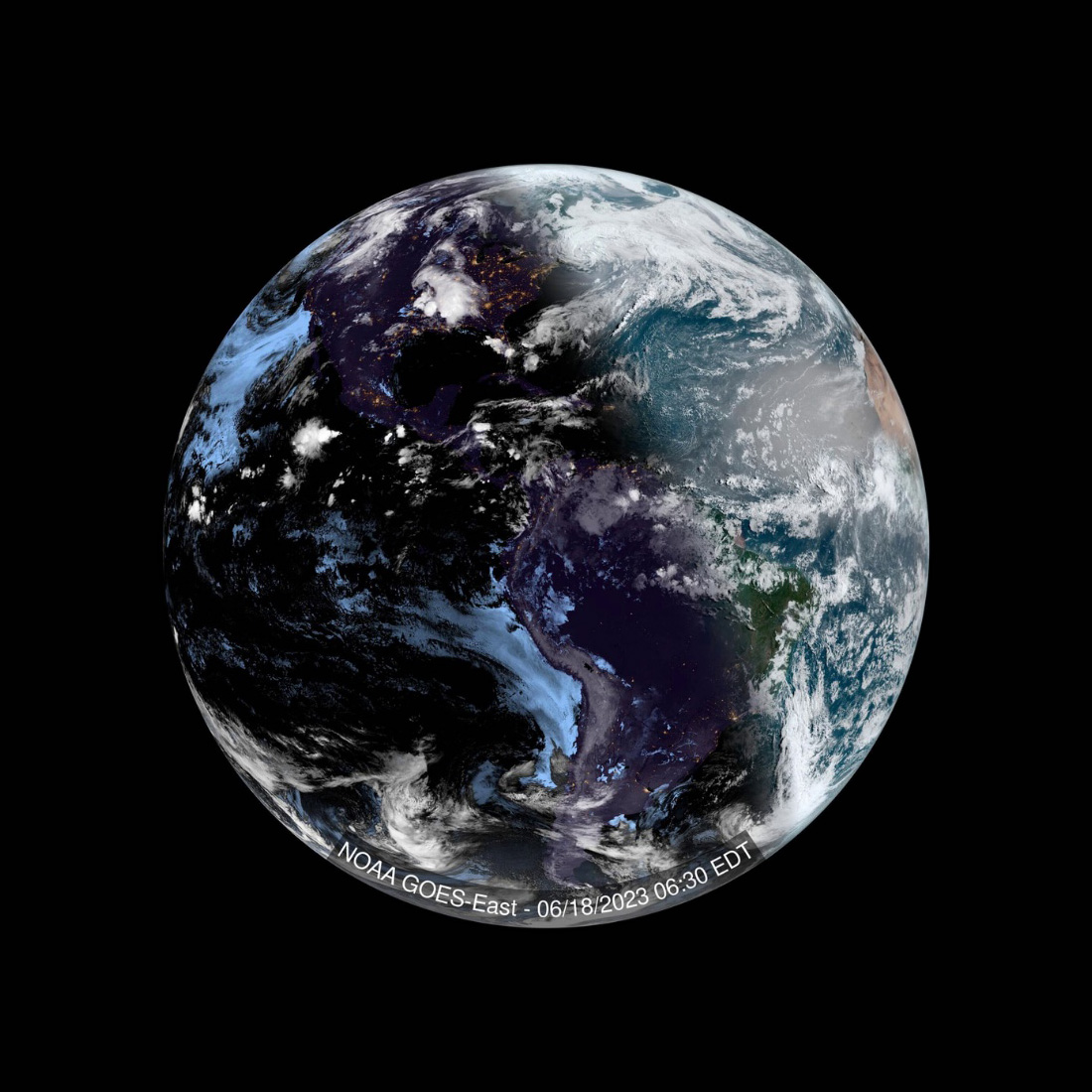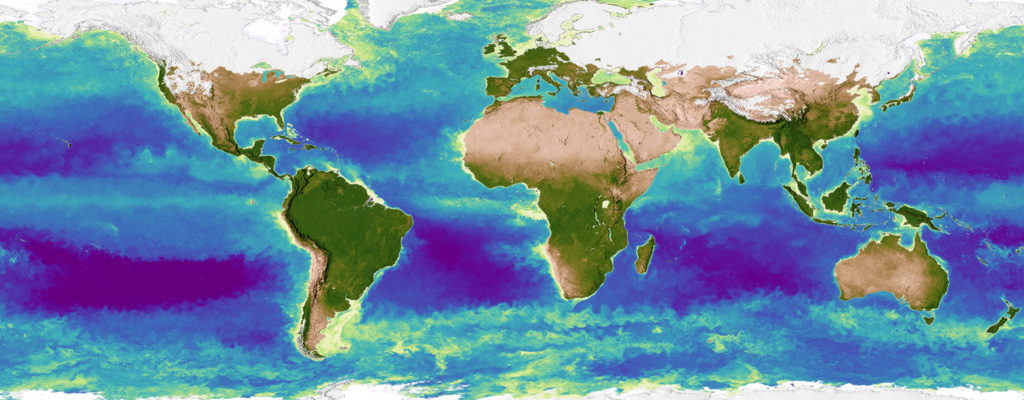vizLab
Explore a universe of data through stunning visualizations and thought-provoking narrative stories in the Frost Planetarium’s visualization lab.

Explore a universe of data in vizLab.
Data is all around us. Researchers use technology tools such as telescopes, electron microscopes, drones, satellites and space observatories to extend human senses and study distant cosmic phenomena and our own planet, collecting vast amounts of information that can reveal the mysteries of Earth and our Universe. Yet data alone isn’t enough—we need visualization tools to transform big datasets into meaningful and interactive experiences.
Visualization helps scientists recognize patterns, predict events, and explain complex ideas simply. In Frost Science’s vizLab, we harness visualization to turn data into engaging science stories about our climate, space, marine ecosystems, life sciences and more.
Explore the systems that make Earth work with NASA’s Earth Information Center.
The marquee feature of the vizLab is a 40-foot long, 9K-resolution curved LED display, home to NASA’s Earth Information Center (EIC). Powered by more than 50 years of satellite data and real-time updates from NASA’s Scientific Visualization Studio, the EIC allows guests to see how our planet is changing in nine key areas: sea level change, air quality, biodiversity, wildfires, greenhouse gases, energy, disasters, water resources, and agriculture. Through the Earth Information Center, discover how we can use data to see the unseen and consider why this information matters to us all.

Stay up to date on current science with vizStories.
Discover the latest research findings and developments in science through vizStories, a rotating collection of short narratives located within vizLab. Frost Science works with local and national partners from a variety of research fields to produce vizStories, providing up-to-date current science for guests year-round.
vizStories are created by Frost Science Studios, the visualization production team of the Phillip and Patricia Frost Museum of Science, in collaboration with local, national and global partners.
The EIC was created by NASA and is enabled by contributions across EPA, FEMA, NASA, NOAA, USDA and USGS.


